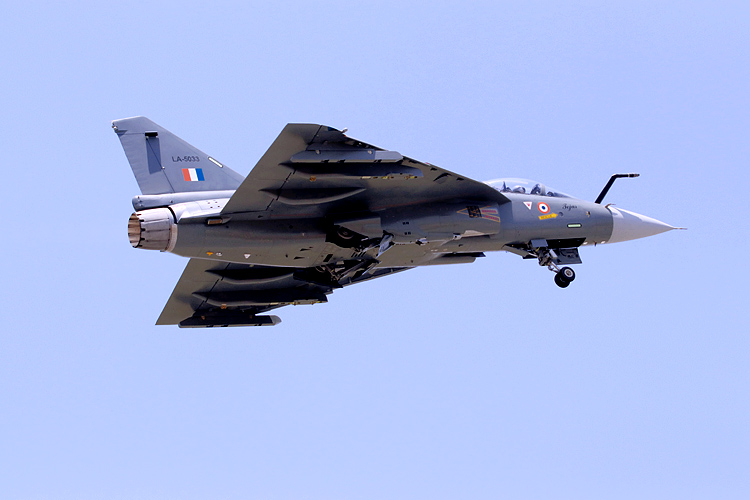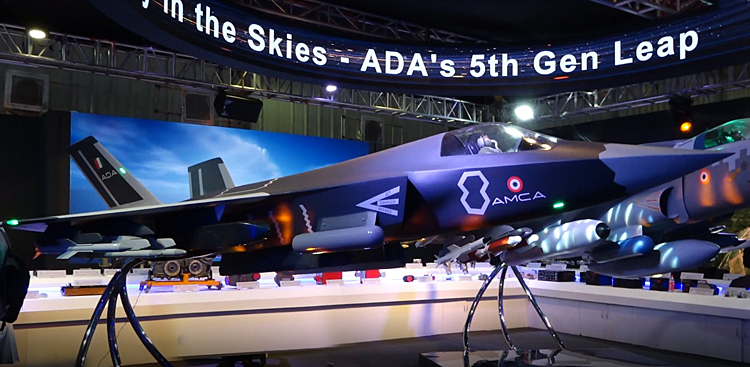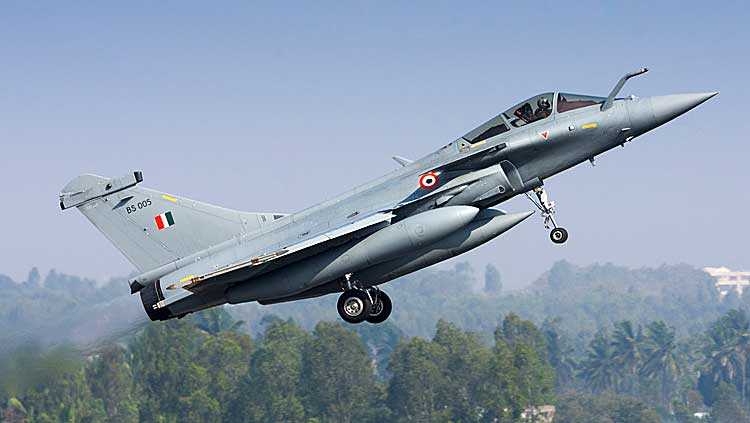INDIAN ARMED FORCES CHIEFS ON OUR RELENTLESS AND FOCUSED PUBLISHING EFFORTS

The insightful articles, inspiring narrations and analytical perspectives presented by the Editorial Team, establish an alluring connect with the reader. My compliments and best wishes to SP Guide Publications.

"Over the past 60 years, the growth of SP Guide Publications has mirrored the rising stature of Indian Navy. Its well-researched and informative magazines on Defence and Aerospace sector have served to shape an educated opinion of our military personnel, policy makers and the public alike. I wish SP's Publication team continued success, fair winds and following seas in all future endeavour!"

Since, its inception in 1964, SP Guide Publications has consistently demonstrated commitment to high-quality journalism in the aerospace and defence sectors, earning a well-deserved reputation as Asia's largest media house in this domain. I wish SP Guide Publications continued success in its pursuit of excellence.
- Operation Sindoor: Resolute yet Restrained
- India’s Operation Sindoor Sends a Clear Message to Terror and the World – ‘ZERO TOLERANCE’
- Japan and India set forth a defence cooperation consultancy framework, talks on tank and jet engines
- Terrorist Attack in Pahalgam in Kashmir: Unfolding a long surgical war against PAK
- Lt General Pratik Sharma takes over Command of Indian Army's Northern Command
Addressing IAF's Combat Capability Gap
It is well known that the fighter squadron strength of the Indian Air Force is down to around 30 compared to the authorised strength of 42 squadrons because of intransigence and political indecision
 |
The Author is Former Director General of Information Systems and A Special Forces Veteran, Indian Army |

It is well known that the fighter squadron strength of the Indian Air Force is down to around 30 compared to the authorised strength of 42 squadrons; more because of intransigence and political indecision. The Chief of the Air Staff (CAS) Air Chief Marshal A.P. Singh recently publicly said that everybody in the world is looking for self-reliance, and the only way forward is to establish global partnerships, while voicing frustration over the delay in delivery of the first 40 Tejas aircraft that the IAF ordered more than a decade ago.
CAS Air Chief Marshal A.P. Singh recently publicly said that everybody in the world is looking for self-reliance, and the only way forward is to establish global partnerships
Following the above, the government instituted an Empowered Committee for Capability Enhancement of the Indian Air Force, headed by Defence Secretary, in January this year. The Committee submitted its report to the Defence Minister on March 3, 2025. The report is secret but the portion made public includes: key areas identified and recommendations made in the short, medium and long term to achieve desired capability enhancement of the lAF in optimal manner; underscores need to enhance 'Atmanirbharta' in Aerospace domain with the private sector complementing the effort of DPSUs and DRDO. According to the media, the Committee has accepted the IAF's need for new multirole fighter aircraft (MFRA) to enhance its fighting capabilities, and the IAF is preparing a statement of case for acquiring capabilities, with approvals to be obtained, in a time-bound manner.

The report comes at a time when Trump is pushing to sell the F-35 fighters to India and Russia has offered the Su-57 (with transfer of technology). Both are 5th generation fighters but the F-35 is hugely expensive (costs $80 million compared to $35 million Su-57), and an under-performing jet, with six accidents already; it fares lower than the Su-57. Besides, can we afford to ignore the "Kill Switch" on the F-35 that has got Europe worried? Would IAF's short-term requirement be met with import of two-three 5th generation squadrons? Speculation in the media is varied: take some F-35s to please Trump; take Su-57, but Trump says he wants India to reduce Russian defence imports; take Rafale that IAF already has and Rafael (M) are being procured; F-35/Su-57 don't meet IAF's 6th generation fighter requirement; develop 6th generation fighters under 'Make in India'.
According to analysts, by the time India inducts its multirole fighter in the IAF, China will have 1,000 5th generation fighter aircraft

A recent study (the study group included former French Air Force officers) by the French Institute of International Relations (IFRI), has concluded that the French Air Force "could" survive just three days against Russia; 4th generation French Rafale pitted against 5th generation Russian fighter aircraft. Should we import more Rafale?
Notably, while offering the Su-57E to India, Russia has said that the 'existing infrastructure' for the production of the Su-30 MKI could be used to launch the production of the Russian 5th generation fighter jet in India
Developing 6th generation fighters under 'Make in India' appears to be what the Ministry of Defence is aiming for. But this must be viewed in the context that the PLA Air Force (PLAAF) already has two 5th generation fighter jets and China recently demonstrated a 6th generation fighter at the Zhuhai air show. India's Advanced Medium Combat Aircraft (AMCA) program kicked off last year. However, it is a 10-year programme, with five prototypes to be produced, followed by trials and operational certification before induction. According to analysts, by the time India inducts its multirole fighter in the IAF, China will have 1,000 5th generation fighter aircraft.

World's leading AI models when asked on how they would fix the IAF's air power gaps, balancing immediate needs with long-term modernisation gave the following recommendations, summary of which are -
Response from 'OpenAI ChatGPT' included:
- Fast-track Tejas Mk1A Induction; first batch beginning by 2025 and 83 Tejas Mk1A inducted by 2028 by ramping up production (16-18 aircraft per year), maintenance, training and HAL outsourcing;
- Convert MRFA (114 Fighter Jets) procurement into a Government-to-Government (G2G) deal to expedite selection and delivery, followed by local manufacturing under "Make in India" with private sector participation, select one single fighter to avoid logistical complexity, beginning induction by 2027, 12-18 aircraft annually, six squadrons by 2032, expand Rafale 4 fleet;
- Develop and scale up Tejas Mk2 by freezing final design and flying prototype in 2025, begin serial production in HAL by 2029, six squadrons operational by 2035;
- Prioritise AMCA development – first flight by 2028, serial production begins 2035, at least two squadrons of AMCA Mk1 by 2035, Mk2 production by 2040, seven squadrons of AMCA by 2045. Bridge IAF's capability gap with additional Su-30 MKI upgrades.
'X Grok' recommendations include:
- Accelerate/expand LCA Tejas programme – increase Tejas Mk1 production by incorporating private sector, 10 squadrons of Tejas Mk1A by 2029, Mk2 first flight by 2027, induction by 2032 and six squadrons by 2035;
- Rafale boost – G2G deal for importing additional two-three squadrons in flyaway condition by 2030;
- Streamline MFRA programme – reduce requirement from 114 to 57, choose one aircraft (Rafale or F-21), begin deliveries by 2030 under Buy Global, Make in India, induct three squadrons by 2035;
- IAF variant of TEDBF – adapt Navy's Twin Engine Deck Based Fighter (TEDBF) into twin-engine Omni-Role Combat Aircraft (ORCA) for the IAF, first flight by 2028, production by 2033, four-five squadrons by 2040;
- AMCA – first flight by 2028 with prototype production assigned to private firm, serial production by 2035, four squadrons by 2040;
- Optimise existing fleet – fast-track and complete upgrade of Su-30 (240 aircraft) by 2032, upgrade and extend life of Mirage 2000 and MiG-29 (both totalling about 90 aircraft) to 2035-2040.
Responses from 'Google Gemini' include:
- Prioritise and expedite production of LCA Mk1A and Mk2 variants;
- Maintain strong funding and support for the 5th generation AMCA, timely development, testing and induction;
- Selective acquisitions (with transfer of technology) of proven platforms to bridge immediate capability gaps;
- Continue modernisation of Su-30MKI and MiG-29 fleets;
- Enhance support infrastructure, maintenance, logistics and training;
- Increase integration of combat drones in to the IAF to supplement manned fighter fleet.
Recommendations by 'Microsoft Co-pilot' include:
- Accelerate production of LCA Tejas Mk-1A and Mk-2, along with the AMCA with a target of inducting 40 fighters annually;
- Finalise MRFA deal for 114 x 4.5-generation fighters, potentially involving Rafale, Gripen, or F-35;
- Implement the "Super Sukhoi" upgrade for Su-30 MKIs and modernise Jaguar and Mirage 2000 fleets;
- Induct more AEW&C aircraft, mid-air refuelers, and advanced missile systems;
- Fast-track AMCA and invest in 6th-generation fighter technologies.

Responses by the world's leading AI models are very interesting. The schedules suggested by them are no doubt very tight and extraordinary efforts would be required to meet them. We need to keep in mind China's existing and future capabilities, plus the timeline of Pakistan procuring 5th generation fighters from China and Turkey.
US Commerce Secretary Howard Lutnick has urged India to 'stop procuring' Russian weapons; stating that restricting Russian arms purchases is essential for strengthening ties between India and the US
Notably, while offering the Su-57E to India, Russia has said that the "existing infrastructure" for the production of the Su-30MKI could be used to launch the production of the Russian 5th generation fighter jet in India. But Trump wants India to reduce defence exports from Russia. US Commerce Secretary Howard Lutnick has urged India to "stop procuring" Russian weapons; stating that restricting Russian arms purchases is essential for strengthening ties between India and the US. Should India be cowed down by such threats? Moreover, India should be wary that a future US government can stop supplies of spares to India.

Expansion of the Rafale fleet looks easy but these aircraft cannot match up to 5th generation fighters, as pointed out by the French Institute of International Relations (IFRI). There is speculation in the media that IAF may buy the American F-21 or F-15EX to ease America's tariff war, although both these jets cannot compete with China's 5th generation J-20 and J-35A – as if the decision will not be political. Though indigenous programmes are being accelerated, immediate requirement of the IAF can perhaps be met by procuring 5th generation fighter jets under 'Buy Global, Make in India', but with full transfer of technology. The ball is in the government's court.





